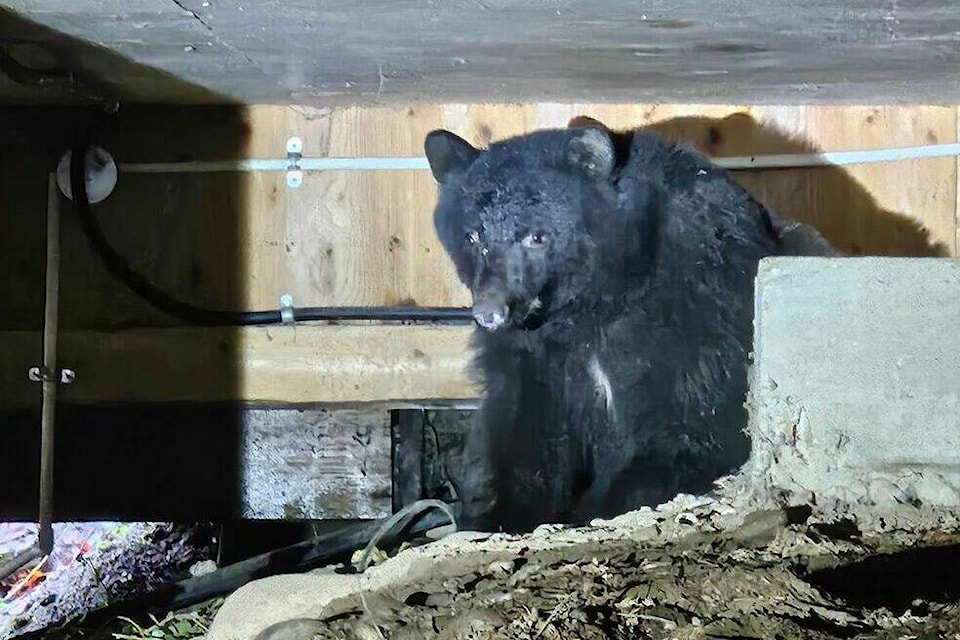While the discovery of a bear under the deck of a family near the Cowichan River recently was a shock, it’s not necessarily unusual according to one researcher.
If there are fish in the river, bears might not hunker down for the winter right away, but they will eventually, says Helen Davis, a biologist with Duncan-based Artemis Wildlife Consultants.
The problem is, there are fewer and fewer natural places for them to hibernate due to logging practices and that’s why we’re seeing them snuggled into more peculiar places.
Davis has been researching bear dens for more than 30 years and says the black bears we have on Vancouver Island need to hibernate, especially the females.
“Any female who is going to have cubs 100 per cent has to den,” Davis explained. “The cubs are born helpless with their eyes closed, weighing about a pound, and they need to nurse on their mother for 70-90 days before they’re big enough and strong to leave the den.”
The males, on the other hand, generally hibernate for around four months.
“In places where bears have access to non-natural foods then they may come out in the winter to eat the garbage,” Davis added. “But it’s not a natural behaviour.”
Bears prefer to make use of large hollow tree trunks and stumps as their dens, but will make use of other spaces as well, she said.
“I did have a den creation project for seven years in the Jordan River watershed where I attempted to make dens out of old-growth cedar stumps,” Davis said. “One of those was used in Jordan River for four years in a row.”
Creating human-made dens is a short-term fix, though, the researcher noted.
“Those stumps are cedar so while they last longer than other tree species, they are rotting away,” Davis said. “It’s a stop-gap solution until we grow trees large enough to become new dens.”
What needs to happen first, Davis explained, is adequate protection of existing dens.
“That’s what I’ve been pushing really hard for the last six years,” she said. “Appropriate den structures are crucial. Without them we can’t have bears.”
Davis has been working to get changes to the Wildlife Act made to ensure that forestry companies are legally responsible to protect a den when one is found. And protecting it doesn’t mean leaving the single tree or stump standing. Davis would like to see a one-hectare patch left around the tree.
“Cubs need to climb to escape predators,” she said, adding that trees provide a safe space for the young family to grow.
Step number two is for logging management to allow for second growth trees to grow large enough to become new dens.
The provincial government has been studying the dens on Vancouver Island and Haida Gwaii though to date the only dens that are protected are on Haida Gwaii and in the Great Bear Rainforest on B.C.’s central coast.
“If you think it’s important in these places, why is it not important on Vancouver Island and the rest of B.C.?” she wondered.
“They’re protected because there’s just been extra pressure in those places to protect dens. I’m hoping that will happen here.”
